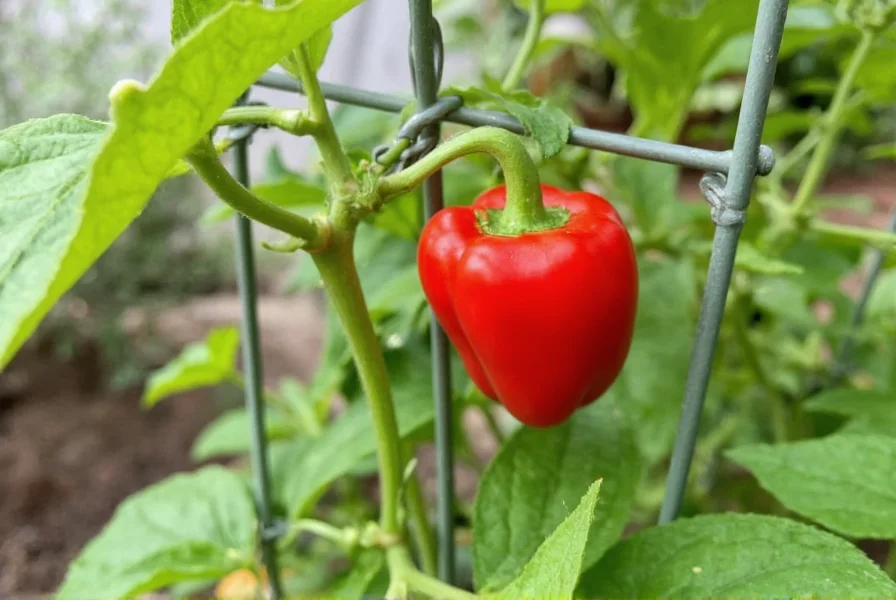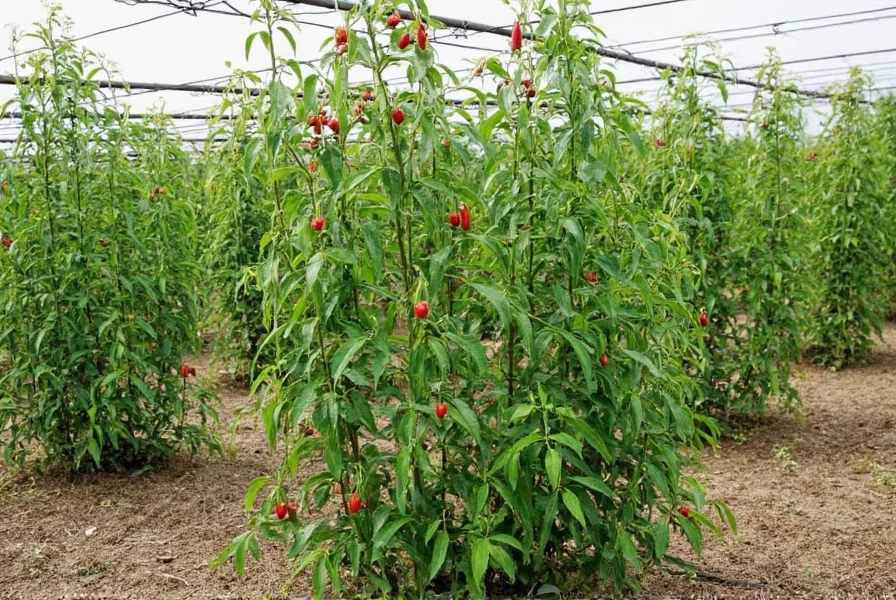For gardeners seeking to maximize their pepper production, implementing an effective trellis system transforms both plant health and harvest efficiency. Unlike sprawling plants that waste energy on horizontal growth, trellised peppers direct energy toward fruit production, resulting in larger, cleaner peppers with fewer pest issues. This comprehensive guide details proven techniques for supporting pepper plants throughout their growth cycle and optimizing harvest results.
Why Trellising Improves Pepper Harvests
Pepper plants naturally grow as bushes, but their flexible stems often struggle to support mature fruit loads. When peppers hang directly on the ground, they become vulnerable to soil-borne diseases, pests, and rot. Trellising solves these problems through strategic vertical support.
Research shows trellised pepper plants typically produce 20-30% higher yields than unsupported plants. The improved air circulation reduces fungal diseases like blossom end rot by keeping foliage dry. Sunlight penetrates more evenly through the plant canopy, promoting uniform ripening across all fruits. Additionally, elevated peppers stay cleaner and develop more consistent coloration.
Best Trellis Systems for Pepper Plants
Several trellising methods work effectively for peppers, each with specific advantages depending on your garden setup and pepper varieties.
| Trellis Type | Best For | Installation Tips |
|---|---|---|
| Florida Weave | Row crops, bell peppers | Install posts every 6-8 feet; weave twine between plants at 12-inch intervals as plants grow |
| Single String | Individual plants, hot peppers | Attach string to overhead support; wrap gently around main stem as plant grows |
| Cage System | Container gardening, compact varieties | Use sturdy tomato cages; secure to container to prevent tipping |
| T-Frame | Large gardens, commercial production | Build frame with horizontal crossbars; use soft ties every 8-10 inches |
Optimal Timing for Trellis Installation
Install your trellis system when pepper seedlings reach 8-12 inches tall—typically 2-3 weeks after transplanting. Early installation prevents root damage that occurs when inserting supports among established root systems. For direct-seeded peppers, install trellises when plants develop their first true leaves.
As plants grow, check support systems weekly. Adjust ties to accommodate stem thickening without constriction. The critical period for trellis maintenance occurs when fruits begin developing, as additional weight stresses the support structure. Regular monitoring prevents snapped branches and lost harvests.

Step-by-Step Guide to Trellising Peppers
Follow these steps for successful pepper trellising:
- Prepare supports - Install sturdy posts (at least 6 feet tall) 2 inches from plant bases
- Initial tying - Use soft plant ties to secure main stem to support at 6-inch height
- Progressive training - As plants grow, add ties every 8-10 inches along the main stem
- Branch management - Gently guide side branches toward the trellis using figure-eight ties
- Fruit support - For heavy varieties, use mesh bags or soft slings under developing fruit clusters
Avoid common mistakes like tying too tightly (restricts growth), waiting too long to install supports (causes stem damage), or using materials that cut into stems (nylon ties can damage plant tissue). Cotton twine or specialized plant tape provides ideal flexibility and support.
Harvesting Techniques for Trellised Peppers
Trellised peppers offer significant harvesting advantages over ground-growing plants. The elevated position makes fruits more visible and accessible, reducing strain on your back during harvest. Follow these best practices for optimal results:
- Harvest when peppers reach full mature color (red, yellow, or purple depending on variety)
- Use sharp pruning shears to cut stems ¼ inch above the fruit
- Harvest regularly to encourage continued production
- Check plants every 2-3 days during peak production
- Handle fruits gently to avoid bruising the thin skin
For bell peppers, you can harvest at the green "immature" stage, but allowing them to ripen to their final color increases sweetness and nutrient content. Hot peppers typically reach peak heat levels when fully colored. Morning harvests when temperatures are cooler help maintain fruit crispness.
Troubleshooting Common Trellis Issues
Even with proper installation, gardeners may encounter challenges with trellised pepper plants:
Problem: Plants outgrowing trellis height
Solution: Install taller supports initially (peppers can reach 5-6 feet). For existing plants, extend trellis upward with additional posts and horizontal supports.
Problem: Broken branches under fruit weight
Solution: Add supplemental support for heavy fruit clusters using soft slings. Prune excess foliage to reduce wind resistance.
Problem: Uneven ripening on one side of plant
Solution: Rotate plants periodically if in containers, or prune selectively to allow light penetration throughout the canopy.

Maximizing Your Pepper Harvest Through the Season
Proper trellising extends your harvest window by maintaining plant health throughout the growing season. As summer progresses, monitor for signs of stress including yellowing leaves or reduced fruit set. Address these issues promptly with appropriate feeding and watering.
Mid-season pruning of lower leaves improves air circulation and redirects energy to fruit production. Remove any diseased or damaged foliage immediately to prevent spread. Consistent harvesting encourages continued production—peppers left on the plant too long signal the plant to stop producing new flowers.
For late-season production, consider installing temporary shade cloth during extreme heat waves. High temperatures can cause blossom drop and sunscald on exposed fruits. The trellis structure makes it easy to drape protective fabric without damaging plants.
Conclusion: The Harvest Advantage of Proper Pepper Support
Implementing a thoughtful trellis system transforms pepper growing from a challenging endeavor into a consistently rewarding experience. The initial investment of time in setting up proper supports pays dividends through cleaner, higher-quality harvests with less plant disease and greater overall yield.
Whether you're growing sweet bell peppers for fresh eating or hot varieties for preservation, proper trellising ensures your plants reach their full potential. By following these evidence-based techniques for supporting and harvesting trellised peppers, you'll enjoy healthier plants and superior harvests throughout the growing season.











 浙公网安备
33010002000092号
浙公网安备
33010002000092号 浙B2-20120091-4
浙B2-20120091-4